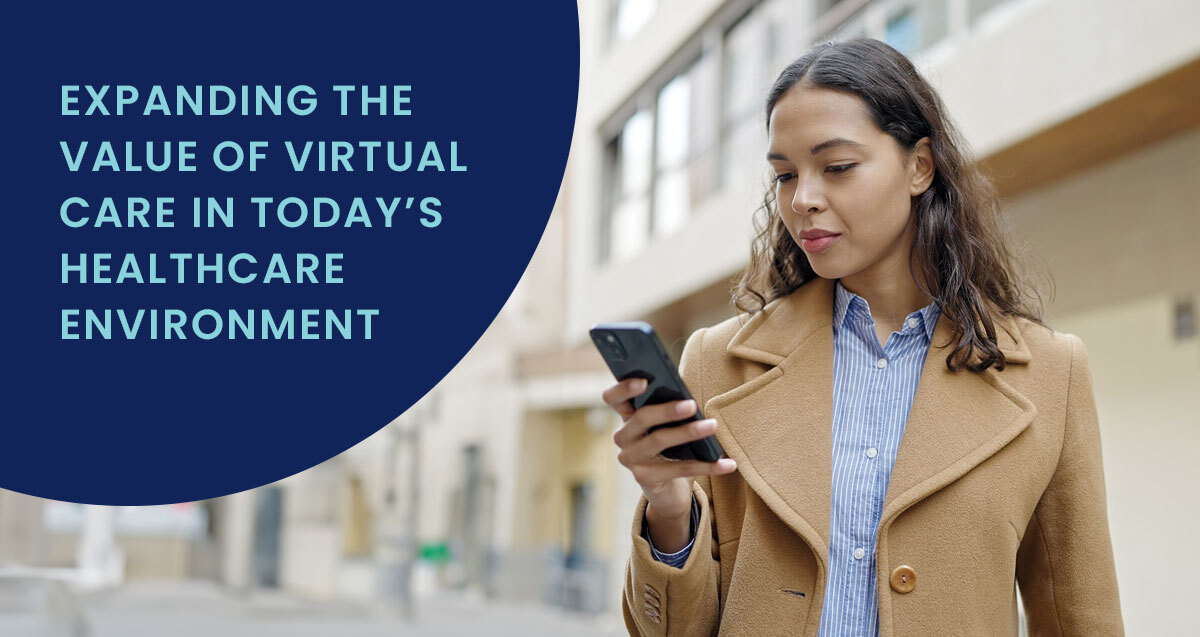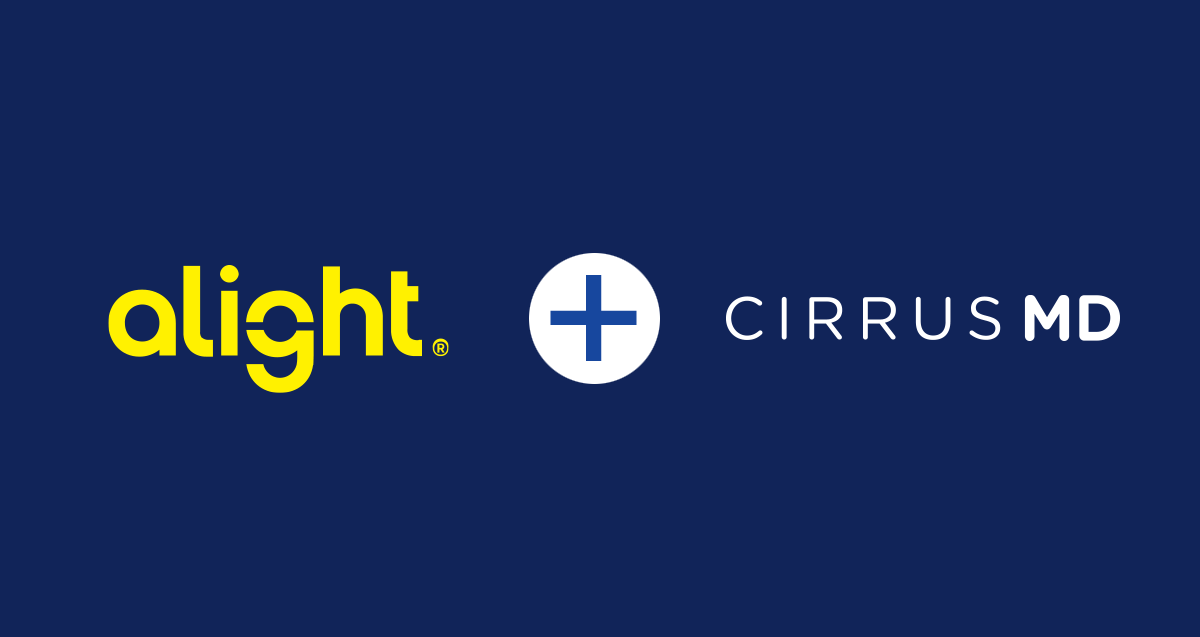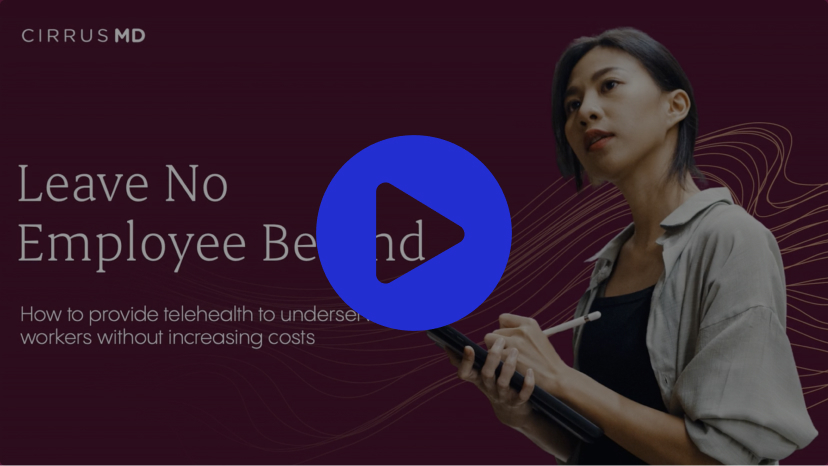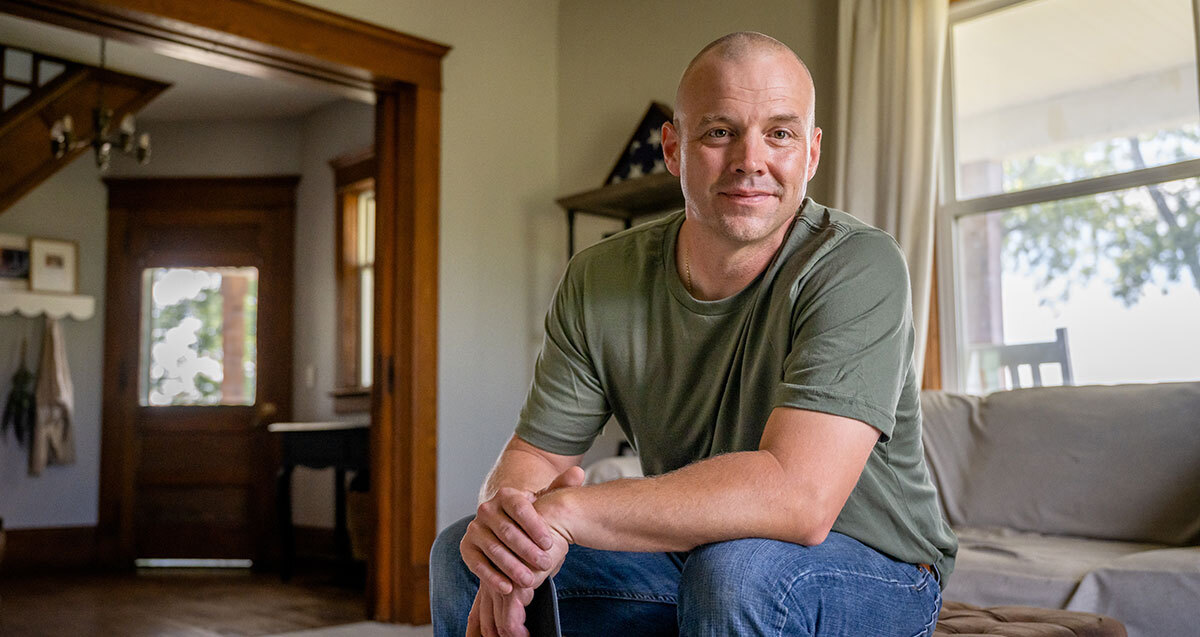
Presenters
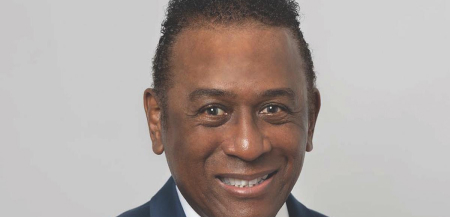
Bobby King
Vice President of DE&I, Colorado Access
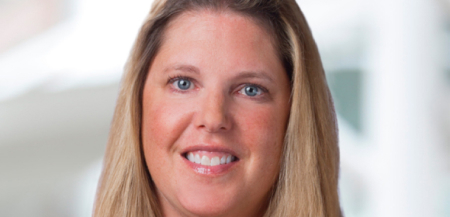
Donna Baldwin, D.O.
Chief Clinical Quality & Innovation Officer, CirrusMD
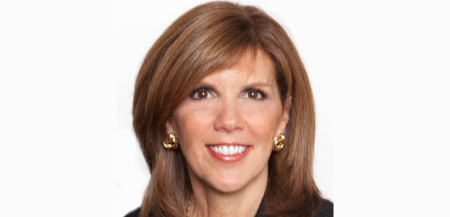
Carole Watkins
Former CHRO at Cardinal Health
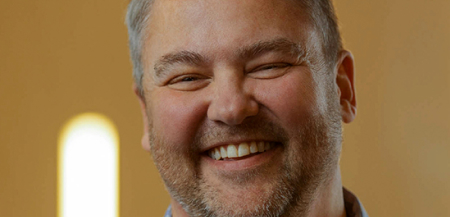
Jeff Voss
VP of Employer Markets, CirrusMD
Transcript
Cheryl Flury: Hi everyone. This is Cheryl Flury. Thank you very much for joining us today. We appreciate everyone taking the time from their schedules to be here. I'm excited to introduce you to an amazing group of panelists that we have with us today.
So let's set the stage for today's webinar and let's give a little bit of thought to what we've seen happening, not just within our industry, but really throughout the United States and around the globe over the last several years.
So if you think back over the last few years, we've seen things like a global pandemic come onto the scene and completely change the way we work, change where we work, changed the way we accessed healthcare and had a significant impact on behavioral health and people's state of mental health.
As we think about that, we think too, about how much of a shift there was away from the office. I mentioned that people started to work in different locations. And one of the things that we've seen is this enormous shift in deskless workers.
We saw social unrest happen over the last few years, that really started to change people's expectations of how their employers and how people that they work with were looking at diversity, equity and inclusion, and asking their employers to think about ways that they could start to create more DE&I programs that would be more inclusive for more and different kinds of their colleagues and coworkers.
We saw employees really change the game and change their thinking around their jobs. We've referred to it as the great resignation, but interestingly, it's really been a period of time where people completely rethought their job, their role, and what their employer was providing to them. We're gonna talk about that more too during this panel discussion.
We saw companies like Starbucks and Amazon start to unionize. And that was really interesting for companies that had traditionally been known for offering a good benefits package to their employees. And today we look at this superheated economy that we're in and we're all on the verge of wondering with this inflation rate, is there also a recession that's around the corner?
So as we all talked about these factors, we came to create this panel discussion and bring together these experts today who are going to walk us through this topic that we've teed up, that we're calling no employee left behind.
And what this is really about is how do fairness and equity live in harmony with fiscal responsibility and a company's bottom line? How do you actually perform that balancing act especially if you are the person who's responsible for making decisions about your benefits and decisions that impact your employees?
So we wanna talk about how companies can expand healthcare, and expand healthcare access to underserved workers without increasing their costs.
So with all that, let's go ahead and meet our panelists. I'm so excited to introduce you to the group that's with us today. We have Carole Watkins joining us.
I've been fortunate enough to know Carole for a couple of years. Carole was formerly the CHRO at Cardinal health, a Fortune 20 company that I'm sure all of you recognize. She's a senior executive coming out of a strong human resources background. And she brings to us today perspectives from having led an HR organization at a very large company to today where she's recently retired and now is somebody who serves on the board of a number of different companies. Carole has a beautiful balance of how do we take care of employees while we're taking care of a business.
At the same time, we're also joined by Bobby King. Who's the Vice President of Diversity, Equity and Inclusion that Colorado Access.
And Bobby brings over 20 years of serving organizations and communities as a human resources leader. He has led and managed human resource and EID offices throughout his career. And most recently— I think one of the things that's great about Bobby's new role—is he just received the Denver business journals, inaugural diversity equity & inclusion award.
And Bobby has some really interesting insights and comments that he'll be sharing with us along the way.
I'm pleased to introduce you also to my colleague, Donna Baldwin. Donna is the Chief Quality and Innovation Officer at CirrusMD. She's board certified in family medicine and medical acupuncture.And she brings more than 20 years of experience in traditional family medicine and telemedicine.
Donna's actually one of the people that I think her background is so interesting because she's been a practicing physician using telemedicine since probably before most of us knew what telemedicine was. So Donna brings the best experience into this discussion.
And finally, last but not least, my friend and colleague, Jeff Voss. Jeff is CirrusMD's Vice President of Employer Markets, and he brings more than 15 years of healthcare specific experience. As he's worked together with payers, employers, brokers, and consultants, Jeff is really the person that I count on to bring the industry's perspective into CirrusMD. In his role, he works across a huge variety of employers, broker and consulting groups and others who have thoughts on where we're headed with diversity, equity and inclusion programs. And the employee experience that we're all working to deliver today. So let's go ahead and get started with the panel.
I want to let you know that we're going to be discussing some new models that have been surfacing in the industry very recently, which are stemming from employers looking for ways to cover more and more of their underserved employees. We're seeing employers embrace new models where they're creating new funding to cover more of their underserved workers.
More workers who haven't previously had care. So we're gonna dig into that. And first we'll go ahead and get started. We'll tee up the discussion with a little more context about what we're going, what we're seeing around the industry and Bobby, I'm going to start with you. So the first thing we wanted to talk about is.
When we think about what's happening at the heart of human resources today, we're hearing more and more about this notion of fairness and equity. When it comes to healthcare benefits, what are we really talking about when we talk about fairness and equity?
Bobby King: Yeah. Thanks to the question, Cheryl and, welcome my fellow panelists and those who are on the call with us today.
I think when we're talking about healthcare equity from a benefits perspective when we look at the lens of DE&I efforts. I call them triplets, but not identical.
Diversity is really about valuing the differences in our society. We've all seen a 2020 census. America's browning and graying at the same time, amid generational shift, that data is factual, it's current and it's accurate.
When we look at equity, it's really around access and removing barriers. It's an en vogue term today, but if we need to focus on what are the barriers to access to healthcare and the healthcare benefits are we removing those barriers? Are we aware what those barriers are?
Inclusion is really around voices being heard. Are we talking to the various constituency groups as we're designing employee benefits, as we're talking about structuring benefits? Cost sharing? Those kinds of things. So whose voice is in a conversation as you're structuring plans, determining what we're gonna offer from an employee perspective, what is the employer's contribution to that? Whose voice is at the table of an inclusion perspective?
So the landscape has really shifted around how I talk about member demographics, employee demographics. 40% of the workforce are generation X. Millennials. They look at the whole landscape of work and benefits very differently than generations ahead of them.
So where is their voice in those conversations?
Cheryl Flury And that's definitely one of the topics that we're going to dig into today. So thank you for raising that, Donna. Do you wanna make some comments on that from a clinical perspective? When we think about fairness and equity and healthcare benefits, from your perspective, what are we really talking about?
Dr. Donna Baldwin: Sure. And I think it's important to understand the difference between equality and equity, right? So equality means you're offering the same thing to everybody, which really sets you up for being an unequal or an inequitable solution. And so you really do need to recognize that every person has different circumstances, has different focuses and different needs.
And so it's really important to make sure that you are providing a benefit that allows everyone to get what they need in their own way. Because offering a benefit is certainly one thing. But a benefit that's actually used is, a whole other story. And so I think healthcare and offering healthcare benefits can really be a part of your DE&I strategy.
And so doing that in a way that that your employees will actually utilize that benefit because you've offered one, that actually is an equitable one.
Cheryl Flury: Thank you, Donna, we're gonna, we're gonna stay on this topic, but we're gonna branch out on it a little bit further. So while HR and benefits leaders are trying to expand access, they're also wrestling at the same time with some of those factors that we talked about during my introduction to today's conversation.
It's about balancing costs. Carole, I know with your background coming out of such a large organization and your experience as a CHRO, what's the decision process like on that? How are you balancing fairness and equity with cost and business decisions that you need to make for the health of your business?
Carole Watkins: Thanks Cheryl and welcome everybody. And I I have to say this whole notion of balancing, I don't think they're mutually exclusive, right? I think the good companies are out there and understand that customers and employees are expecting them to make business decisions with using a lens of fairness and equity.
I think it's an expectation. You think about cost containment efforts on the benefits front and how they've evolved over the years. It was at one time all about program design and the cost sharing structure. It moved to access and wellness. Now it's even wellbeing. And also thinking about the broader points of care and the broader issue around the cost of productivity, and the cost of keeping people at work, and the cost of attracting and developing talent and how you can do that.
Both attract and retain talent in this kind of environment. I think thinking about the total population that you're serving as an employer is really important in today's environment.
Cheryl Flury: Jeff, I wanna keep building on that point and I wanna go to you. We've had conversations and I know you have a lot of conversations with folks out in the real world about telehealth becoming this great equalizer when it comes to expanding healthcare access.
I understand though that even though we're looking at telehealth as a great equalizer, there's still some groups that are left behind. Can you talk about who those groups are? And can you talk about how we might be able to use telehealth going forward in order to create —to Carole's point— a more equitable care model for more employees at a beneficial pricing structure?
Jeff Voss: Yeah. And thanks Cheryl. I have this quote here that I think is relevant and I'm just gonna read it. And, here's what it says. It says picking a retail job is no longer just about the money today. It's about a wholesome set of benefits that we can put in place. And flexibility that we can put in place so that we're able to retain a diverse workforce.
And I think there's a lot in that statement. It came from the CEO of a very large consumer electronics retailer. And, during our conversation today, I think we'll be a little more on the retail or retail-like side of things. Cuz as everybody knows, retail organizations tend to have more part-time and uninsured workers that don't receive these kinds of benefits traditionally.
And that's partly where some of our experience is. But back to that comment, what it really speaks to is we can no longer just continue to pay more and more to keep employees happy. We have to think about attractive and compelling benefits that will be really of value to them that they will use.
And maybe if that helps with retention, that's great. But the fact that large organizations— retail in particular— thinking about those kinds of things, whereas in the past maybe that wasn't quite as top of mind. I think it's really important.
Cheryl Flury: Okay, Donna what's your perspective on that? I know you see things you see the impact from a patient perspective. What do you think?
I think it's one thing like we talked earlier about offering a service, but if it's not easy, it's not affordable, it's not convenient. And if it doesn't address the personal nature of healthcare. Then the employees are not gonna use it or they're gonna struggle with using it.
Dr. Donna Baldwin: Our healthcare system is spent every day I hear from patients, I don't know what to do. I don't know where to go. And I think it's important to have a digital front door for these employees to help let them navigate through this confusing healthcare system. And again, there's a lot of us that have high deductible health plans.
Some of us have no insurance and so we all need help on trying to make healthcare more affordable. And I think figuring out how to do that when you're not complicating things and you're not alienating folks. If you say, have a telehealth service where it's video only and you are a rural employee who only has a data plan, doesn't have access to broadband. Then one video visit's gonna wipe out their data for an entire month. And so is that really an equitable solution? Is that really something that is addressing their needs? No, they're not gonna use it. So I think it's really important as Bobby said earlier, to really figure out who your population is and how you're going to best be able to offer them a service because it's not getting easier. It's not getting cheaper and it's not getting less complicated.
And to be able to personalize care. For employees and for patients it is really important. Not every cold and cough looks the same to me that you really have to take into the context of that whole person and who they are.
So I think it's important to pick your benefit and to pick your— if it's a virtual healthcare benefit—your population in mind for.
Cheryl Flury: Yeah, Carole or Bobby would one of you wanna comment on that? I'm thinking about different types of workers. Donna mentioned a couple of settings where you've got like a rural employee who's trying to get care, but they're going to use up their entire data plan for a month by making a video visit.
I'm also thinking about I've always heard that there's a group of employees who are hourly that don't necessarily have the paid time off structure that an exempt employee might have. Would one of you wanna comment on that from your perspectives?
Bobby King: Donna has a really good point.
There's so many structural systems and processes that may inhibit access to care that we need to think through from an ethnicity perspective, generational perspective. And the technology is really key. The front door Donna mentioned, you're running out of your data is an issue.
So how can we get ahead of that? But at the same time make the access point affordable to that demographic or to that segment of the population that's in need of healthcare services. It's not an easy problem to solve, but I think once we began to uncover that and a root cause of that, we can come up with solutions to.
But there's this multi-generational workforce. Multi-ethnic identity. There's so many variables to it. That goes back to who's at the table as you're thinking through these, as far as thought process and thought these are concerned because they're very complex problems that need different attention to, if you will.
Carole Watkins: Yeah. A couple of other points that I would make is in addition to all this, you have provider shortages. And so people, even if they wanted to go see somebody trying to get into somebody is very difficult. And I would say the other thing is getting people to seek care early, not waiting until things become so acute.
And oftentimes they'll do that because they don't have the time off—you're part-time workers. They don't have the time off. They don't have the transportation means to get places and they just think, oh, it'll get better. It'll get better. I'll wait. And things become really acute. Whereas, if we allow them access at a very early stage through a model like CirrusMD offers with a text, they might be able to nip something in the bud before it becomes to the point where they need hospitalization or something else.
Dr. Donna Baldwin: Carole you're totally right. It's something I hear every day on our service is that gosh, I would've never talked about this behavioral health issue because I didn't have time or I'm a busy mom with a bunch of kids trying to manage it, working from home again.
And I would never have made this appointment. I would've never done that. And patients, like you said, don't have access to PCPs because we're a rare and dying breed. I think that we've seen that physician burnout. We've seen that the physicians leading healthcare and the pandemic really contributed to that.
And so I think that you're spot on with trying to find how to get easier access. And when you make it easy, they will use it. They will come on for their UTI and get their antibiotics. And won't wait until they have sepsis or Factoria and have to be hospitalized.
And so really, and truly when you think about healthcare costs for our population that's just contributing to that increased cost by reducing access.
Bobby King: Yeah. I would add something else to the conversation. We look at,bipo populations, historically, at least in Western culture and the US there's been a skepticism toward the medical community, toward healthcare in general.
So maybe part of the design is not just skipping through a solution ; it is looking at cultural brokers or navigators to help people understand and navigate the system. If we could offer that as the package, that might help but access as well, because sometimes people don't know and they're skeptic. Get more proactive services going because people just don't know and they may be skeptical or just fearful of the system.
Cheryl Flury: Thank you for that comment. I know that Jeff has mentioned previously that we've seen models that include access to telehealth platforms that include racial data.
And Bobby, you touched on a really interesting subject, which is there's not necessarily a trust in the healthcare community or people don't always have a direct path to a primary care physician. There's a lot of different factors there. Jeff can you tee up what you've been sharing with us previously about seeing different access to care, and how more kinds of workers are being covered now with a telehealth initiative.
Jeff Voss: I keep seeing this picture in my head and on the left hand side, it's a picture that's titled equality. And in that picture, it's three people with the same size box, all trying to look over a fence at a ball game..
And one of the people in the box can see it just fine. The other's on his tiptoes and the other can't see it at all, but “Hey, let's celebrate that's equality.” But what we really think about is equity and what that means is in the next box over it's three people, each standing with a different size box that allows each of them to see that game over the fence in a way that suits them the best.
And I, I dunno, I just think that's a powerful visual representation of what we're talking about here and, really honing in on what makes care equitable as opposed to just equal.
Bobby King: Hey, and there's actually a third picture in that visual where the fence goes away and there's no need for boxes.
Jeff Voss: Oh, God, even better. That's the world we all strive for, right?
Bobby King: Exactly. That's total equity.
Jeff Voss: Yeah, given the fact that you're here in Denver, like I am, when we get to that point, let's get together and celebrate that. Yeah so, I think Cheryl, just to answer your question.
Yeah. We see interesting things in the data when our clients are willing to share the data with us. One of the things that really jumps out at me is, working with a variety of clients who have sent us, for lack of a better way to say it, ethnicity data in their eligibility files. But in looking at that, you could really draw out some really telling points about equity, and one of those that I think about in particular is a client whose Black population was three times more likely to go to the emergency room for care than the Caucasian population.
And it just really jumped out. And obviously for those of you on the phone there's a couple of implications there. One of which there's an equity issue. And there's potentially an education issue. There's also a cost implication to that, too. When we've been able to really dig into the data like that, we've been able to help our clients not only address their financial goals, but also address their goals for greater equity as they think about access to care and healthcare.
Dr. Donna Baldwin: And I'll just add on just because I'm really proud of our provider network. But when you look at those same cohorts, their resolution rates, what they came on for and the type of care that they received were all equal. Their satisfaction scores were equal. Our ability to care for them was equal.
And so the ability to provide an unbiased care experience to help build trust back into that bipo community. I feel it is really an important feat and something that we're definitely passionate about.
Cheryl Flury: So, let's talk about benefits. We've talked about accessibility, we've talked about equity versus equality or equality versus equity and, there's some really interesting learnings that we're experiencing in terms of delivery and care today. Carole, you and I had an interesting conversation the other day about the great resignation and that it's more than just the great resignation.
Can you talk some more? About what employers are really experiencing and then also the emerging role of benefits in specifically healthcare.
Carole Watkins: Yeah. I think it's a wonderful question and it is more than just the great resignation. You've really gotta think about talent acquisition and you hear a lot today about employers; you take the retail employers that Jeff was talking about having to cut hours because they don't have enough employees. They don't have enough part-time employees. So they're closing stores earlier, or restaurants that are having to close for certain days of the week because they don't have the staff.
So it really is about attraction as well as retention. And I think progressive employers are really thinking of this in a holistic way. It's not just about paying more money in an hourly wage or it really is about what employees are looking for today. Think of me as a whole person.
Think of me and all my needs. And if I'm a part-time worker and I don't have access to care somewhere else, and I have an employer who's going to offer access to care. That's going to be way more valuable to me than maybe 50 cents or a dollar more an hour. To me and my family. So really looking at how, as an employer, you can differentiate yourself in this kind of market as you're both attracting and retaining a diverse talent pool.
I think it was Bobby earlier who talked about listening to our employees. Somebody else is talking to those employees about what they need, what they like, what they're struggling with. And we ought to be doing that as an employer. And a lot of that is dealing with healthcare issues for them and their entire families.
So I think, again, those progressive employers are looking at it in a much broader sense than, just simply focusing on pay for instance.
Cheryl Flury: And so benefits now Bobby's mentioned different generations in the workforce. You've talked a little further about employers looking at their employees as the whole person, not just as a worker.
What do we do next to address a benefit for more employees than we've been able to provide before. Jeff, do you wanna start the comments on that?
Jeff Voss: Yeah, I just looked this stat up this morning, cuz I was curious and I hadn't looked at it in a while, but this won't surprise anybody on the call either, but 66% of all bankruptcies in this country are due to what? Healthcare. People unable to pay their bills.
And, it's not only not being able to pay their bills, but it's time away from work. And as we all know, especially as we're talking about populations with lots of part-time or seasonal workers, a lot of that falls on them. And it's also the most diverse segment of the workforce.
It has lots of young moms with kids, people working two jobs, people who are in school.. Simultaneously. And so it's really a segment of the population that's very disadvantaged, especially when it comes to healthcare.
And I gave a talk at an HR Retail Conference earlier this year. And literally every single organization was there was talking about retention. But interestingly, not many of 'em thought or had made the connection between retention. Or to Carole's point attracting new employees and healthcare. But, you're right in that an extra 50 cents or dollar, when it comes to healthcare costs, that's a drop in the bucket.
That's not gonna save anybody. So that's a long winded way of coming back to, think about providing healthcare to that part-time population. We'll talk more in a few minutes about how financially you can think about that. But I think it just really screams out for the need. And again, to Carole's point, there are progressive employers who say, you know what this segment of the workforce drives my business.
I need to think about them differently than I ever have in the past. And so we're seeing that openness. And, that willingness to engage in that conversation, whereas again, probably pre pandemic, that was a tougher conversation to have.
Cheryl Flury: I have a question that's directed to Bobby coming in from the audience.
And I think it's a really interesting one. Bobby, do you feel like digital technology itself represents a barrier to certain ethnic groups or populations? I can imagine it might add to some of the underlying mistrust people might have of now being in this system. What do you think?
Bobby King: Yeah, I think it's a great question.
With the whole conversation now about privacy and AI and is my cell phone a device for the system to follow me and track me, how private is my data really from a data security standpoint may cause a lot more skepticism than in the past because of the open systems that we have from a technology standpoint.
But again if you're on a limited data plan, that limits your access as well. If you don't have wifi, if you can't have a reliable system where you can get data and transmit data through a video recording or a voice visit. Again, all those barriers are still at play but the technology and security technology will cause more skepticism I believe.
Dr. Donna Baldwin: It reminds me of two statistics that I recently saw PEW research center. 85% of Americans have a smartphone. That's a pretty big number. I also think about how we think about the over 55 over 65 and are they using things like telehealth and technology.
And there was a study that was done, that actually CirrusMD had a large national client. 47% of their encounters were with people over 55. So I think there's a lot of skepticism, like Bobby said, but I think that it's more of a reality that the technology's out there and everyone's using it.
Jeff Voss: I'll just say this. I know when you do these kinds of webinars you wanna provide helpful information and content that's educational. And, so I wanna continue to do that without being salesy but I think what's important to know and to understand is I think one of the things that people get concerned about when you think about privacy is, wow, I've shared a lot of information with you about my healthcare status dependence and all this information about myself in order to get care.
And in a model that we have out today, it's really as simple as just starting a quick low barrier text conversation with a physician. I say that as a way to offer a differing point of view about how you can offer it so that people will be less guarded about accessing care, and the less information you're asking for up front before you'll put them in front of a physician, the better. And that's our philosophy.
Bobby King: From a diversity perspective, a lot of times who is the messenger of that? Who is the trusted resource to convey that to different demographics in our society? If a person from their village, from their neighborhood, from their social network, that could say this makes sense for us as a people, as a demographic. If it comes purely from a Western perspective, it may not be as trusted or perceived from a pure diversity standpoint.
So that's why those cultural advocates are really important. And those advocates are important who have street cred from those particular neighborhoods. And from those, segments of our population from a demographic standpoint.
Cheryl Flury: Donna. I know you've had some observations about the anonymity of a physician being able to care for a patient via text.
Can you talk about some of your experience and what you work with the other physicians who you lead to do in order to ensure that care is delivered in the most equitable manner?
Dr. Donna Baldwin: Yeah. I think the nature of what Jeff was saying with regards to a text space or a text first platform, patients will often come on and ask about concerns that they've had, that they wouldn't want to do a video.
In fact, there are certain states that require a video to be performed to satisfy a patient- physician relationship and often— more than you would think— they say, no, I don't wanna do it. My hair's not ready. I'm not having a good day. I don't wanna see you face to face and we feel much more comfortable texting.
And so they're able to share some of their deepest, darkest thoughts over text that I wouldn't get out from them seeing them face to face in a visit. And a lot of times I hear from patients, thank you for making this easy and thank you for listening to me. Because we can spend as much time as we need with the patient.
There's no rush to get off. And therefore our chats are usually 25, 30 minutes because we really want to take that time and build that trust and rapport. And that way we can make sure we understand everything from the patient. And that's unusual in healthcare. You feel rushed out of the door or you feel like you didn't get enough time with your provider or your physician.
And I feel like this experience, not only from a physician's perspective, but from a patient's perspective really allows that listening and really think that it does provide and trust in the healthcare system. Behavioral health concerns. That's a big one where people are embarrassed, there's still a lot of stigma and unconscious bias around that. Additionally, I'm not seeing the color of anyone's skin when I'm seeing them, so I'm able to provide really, truly unbiased care. And whether that's transgender or LTBTQ or bipo patient, I think it's really the ability to be able to not be masked because they're there, the bias is there and that can do as many trainings as as the state licensure boards wants. That still exists. And so being able to minimize that I think is really where you're gonna get that equitable.
Cheryl Flury: Okay. I wanna dive into the model now, you guys, that we promised when we teed up the topic of this webinar. Which is how do you pay for it? So let's go back to our overarching theme.
Our overarching theme is fairness, equity balanced with cost. And that cost might be for employees. It might be for employers. Jeff, can you tee up and then I wanna get the group's reaction. Can you tee up the specific model that you've been working with for a large employer who has developed a self-funding initiative, if you will?
Jeff Voss: Yeah. Yeah. And I think I'll give credit to some of our clients who took us down this pathway. As we've talked about, we're seeing more interest from organizations with a large percentage of their workforce being part-time or seasonal. So I wanna be very clear. That's what we're talking about here.
Not that it can't work for other organizations; retail- like organizations because it can. But this is where our experience specifically is coming from. And I think you have this dynamic where these employers are saying, geez I'm really concerned about retention and I'd really like to attract some new employees.
And I'm really concerned about equity and I have DE&I strategies, but oh my gosh, for my part-time population, I can't get any budget. And that's just gonna drive my cost higher and that's just not what we do around here. What I would suggest and what we found is, think about that maybe a little bit differently.
And so as you layer a solution like telehealth across the entire population. Your risk population where you have claims risk, and your part-time population where maybe you have some productivity gains and some retention objectives, which are harder to measure.
But if you think about for my risk population, I know that if I've got less people going into the ER or less people going to urgent care that don't need to go there, I'm gonna save money. And so if the savings that you generate there are fairly significant, which we think they can be.
If you think about that in a broader context? Great. I'm saving a lot of money here, but that allows me to subsidize the cost, the hard cost for providing the solution to my part-time population or even my seasonal workers too. And we've had enough data, we've had enough experience where we're able to put real financial measures and guarantees behind that cuz we believe in the model.
And we believe employers should really be doing this for all the reasons we talked about before, which is this is a population that's very underserved. They really struggle with access to care and you would be giving them something that can truly change their lives and in some cases save their lives.
So we're here to help you think about different ways to envision funding a program like this for that segment of your workforce.
Carole Watkins: So Jeff and Donna, maybe I'll, pose a question that I think employers ask, because I think that notion makes sense. But when you think about that and you think about it in conjunction with the traditional telehealth offerings that the large insurers might offer.
So you talked about offering it to your insured population to help offset driving them to lower cost of care. But how does that differ in what drives them to this offering versus a more traditional telehealth?
Jeff Voss: Carole, it's a great question.
It's a question that Donna and I— cuz we partner a lot of the time— receive all the time. Part of it goes back to their goals, but look, we have every single one of our clients, every single one has a carved in telemedicine solution from their carrier, but that doesn't always meet their needs.
And for a lot of those employers who could say "Hey, look, if you believe so much in telehealth, and we can get you X amount of additional utilization because it's just a different model then don't you win there? And so we have some clients who say I'm gonna let my carved in solution and CirrusMD coexist, and I'm gonna provide CirrusMD to my part-time population, too.
We have some clients who say, you know what, I've had the traditional telemedicine. I'm done with that. I'm ready for something new and different. And that's what I wanna sign up for.
Carole Watkins: And I think a lot of employers have struggled with some of the more traditional for some of the reasons we've already talked about.
Right. You've got to have access to video. You have to fill out a lot of documentation about your health history and about who you are, et cetera. Before you even get an appointment, you might have to wait a day or two to actually get an appointment versus the offering that CirrusMD has, where you literally can send a text and have an answer within minutes. So I think that's a big differentiator.
Jeff Voss: You get to work with someone just like Donna, whoever everybody can see on the screen here. Friendly expert clinician.
Dr. Donna Baldwin: And I think Carole, for me, it's about utilization, right? It goes back to the very beginning. Is the telehealth solution you have equitable? Is it being used?
Because I think that's also what we run up against. I'll say that's great. You also may have a behavioral health point solution. Is it used or is it very costly and it's embarrassing and your employees don't wanna use that? Whereas they can offer us as a whole person care solution that includes things like behavioral health and chronic disease and women's health and, the acute stuff. So I think it's really about that utilization because if we don't get them using it, they're not gonna actually see the ROIs. The employer's not gonna see the ROI on those ER visits and those urgent care visits if their employees aren't actually using it.
They're not gonna have improvements in their overall mental and behavioral health if they're not seeking care and having access to that. Goes back to that urinary tract infection that just doesn't go because there's all these barriers to doing so, and they end up in the hospital.
So I think that the ROI that Jeff talks about has to do with the utilization and the savings because of the utilization. Utilization doesn't drive more healthcare costs. It actually really makes them go down.
Jeff Voss: And, Carole, given your role in the past, just your experience, I'd love your reaction to this. It used to be that during open enrollment you'd talk about, oh, we've got these great health plan options and this very broad provider network with all this choice.
Isn't that awesome. And then telemedicine. Partly as a result of the pandemic, it has become much more heavily used and much more known and adopted but by and large telemedicine is phone and video. Could you take the same concept that used to apply to a bricks and mortar provider network and say geez, you know what, for our telehealth strategy, we should consider offering choice there too. Whereas there isn't a whole lot of choice today. I don't know, just interested in your perspective on it.
Carole Watkins: It's an interesting perspective and it's an evolution, right? And that goes back to some of the things we talked about even when the question came up about the trust of using any of these methods.
And the fact of the matter is you look at how we communicate and how people communicate today. And text is a huge part of how we communicate. I can be in the house with my kids upstairs and I'll text them. I'll text you. It's just how we communicate today. And so I think it's the right kind of evolution for us all to be thinking about.
Bobby King: Bobby can you take that model that we're now describing, where you're getting more workers, more people covered with healthcare and put your DE&I lens on and talk about how do you create a business case around DE&I initiatives, and how is healthcare a part of that?
Yeah even though I talked about the cultural skepticism, the fact that the modality and technology allows for greater access. That's the golden thing, that's the big thing that we're talking about. That allows for more people to have access to healthcare, period. Through technology, through texting, through iPhone technology that's the great add in recent times for everybody, regardless of their ethnicity, identity or demographics, where they live.
So from a D&I perspective to tap into when and how. What apps are people using? Is it WebMD and what is the utilization of that by demographic? So CirrusMD has demographic data. So really peeling that data back for every customer, for every demographic, every region, of the country, and looking at where the missed opportunities are from a D&I perspective where the yield, the low utilization points, demographically, generationally.
To create more access to technology for healthcare through those through again, this technology we're talking about. So it has really opened the system up from an architecture perspective to drive costs down because utilization as Donna said gets higher. So more users from a proactive perspective drives costs down over time because they're getting ahead of the healthcare issues versus waiting to go to the ER to the urgent care when things are maybe a little bit too late and problematic.
Cheryl Flury: Carole, can employers use this as a winning strategy going forward in the world that we're living in today from a cost perspective? From an employee perspective?
Carole Watkins: Yeah. I think, as I mentioned before. I think progressive employers have to do just that. They have to be thinking outside of just wages et cetera.
They have to be thinking about how can I attract and retain the people I need to serve my customers. And this kind of offering, I think, is on the forefront. I think it's still unique. But one that I think can really help differentiate and I think it will set apart employers that think about this in the right way.
Bobby King: Outside the device, what are the wraparound benefits to help increase utilization? Do you think about that from a DE&I perspective? From a generational perspective? To support that utilization rise, what's needed around that?
We talked about navigators. People in your organizations who can speak to those villages, if you will, to those demographics, who can help address, why aren't people using it more?
Carole Watkins: To Bobby's point, you can take learnings that we've had in the past in the area of health and storytelling.
As employers used to offer large health fairs and all of a sudden you were telling stories about somebody who found out they were prediabetic and through a health fair, they found out they had high blood pressure. They found out they had high cholesterol. Whatever the case may be, use that same learning that you had with storytelling from the villages or the populations that Bobby was referring to to tell their story of how this service helped them and their families.
Bobby King: When I was at Kaiser, we would do barbershop Saturdays, beauty shop Saturday in the black neighborhoods. What if those are virtual now because of the pandemic and people are more remotely a virtual form for that to talk about healthcare and healthcare needs. So there's different modalities we can use to wrap around the technology.
Dr. Donna Baldwin: I think your telehealth provider has to partner with the employer, right? I think where I've seen success is where we are able to partner with the employer and talk about their goals and objectives.
And so let's say they look at their population and they have a great need for women's health. How can we support them with that? And so by working together, the telehealth company and the employer, you can really achieve goals together. During the pandemic we had a client who said, I need your help with work notes or I'm gonna offer vaccine time off paid for everybody, but I just need them to be verified by a provider. And so really being able to offload the HR departments, the supervisors to not be in that space giving medical advice or determining who needs to be off and who doesn't leave that to the physicians. And so really, I think it's also about partnering and getting to know each other and, utilizing each other for the word of mouth, for the, leveraging of the resource.
Cheryl Flury: I'm gonna ask our final question you guys, as we're in the home stretch here with just a couple of minutes to go .Put your lens on, put your own individual hat on. What can we do to change the game? Bobby, I'll start with you.
Bobby King: Society is changing rapidly which is, I think we all know that. So what can we do from the voices being heard around these topics and to pay attention to different lived experiences as we try to bring the cost of healthcare down and the utilization access up.
So I always say to leaders who's your kitchen cabinet? Are you having multi-generational, multi-ethnicity conversations about key decisions in your business model? Cause if you're not doing that, you're missing perspective and solutions.
Cheryl Flury: That's a really interesting observation. Carole, what do you think?
Carole Watkins: Yeah, I would just add to that it's the intersectionality of all the things we're talking about, right? I think you can no longer silo these decisions and make healthcare decisions in a silo. I think getting your healthcare leaders talking to your DE&I leaders.
So those people, your chief diversity officer who wakes up every day thinking about sense of belonging, the whole person et cetera, with your healthcare executive who's thinking about delivering healthcare and the most cost efficient, et cetera, get them talking to one another, have them start to establish overlaying goals that delivers this in a way that is listening to the employee, that is allowing access on a broad basis. That's increasing productivity. That's keeping people on the job. That's helping you \ attract and retain. It's the intersectionality of all of those that are really going to set employers apart.
Cheryl Flury: That's a great observation, Dr. Baldwin, what do you think?
Dr. Donna Baldwin: Yeah, I would say healthcare is not getting simpler. It's getting more complex.
I think the addition of telehealth is making things more complex and sometimes, depending on your service, it's making things cost more. The United States is one of the leading expenditures on healthcare and yet our outcomes stink. That's my medical opinion.
So I believe this is not a moment for discussion. This is a moment for action. And so if you truly wanna make a difference in your healthcare costs across your population. If you really wanna make a difference in your DE&I strategy. I think you have to act. I think you have to make decisions that are really gonna make a difference and get those outcomes.
Cheryl Flury: Thank you, Jeff, what do you think? Take us home.
Jeff Voss: Yeah. Tough to put a capper on that after our three other panelists. Yeah I guess I would just say there are people out there who are really struggling with access to care and they may be a part of your organization.
And I guess I just encourage and challenge you to think differently about how you can work to address that. There are some creative ways you can do that and I encourage you to have those conversations.
Cheryl Flury: Thank you everyone. I'd like to thank everyone who attended the webinar today for joining us. Thank you so much for carving the time out of your schedule to be with us for this conversation. And I especially wanna thank the panelists. You guys, your observations are interesting. And to me, there's some real game changers that are on the table right now. So thank you so much for bringing your thoughts and your expertise into today's panel discussion.
Thank you all for joining us. Thank you panelists for your expert opinions. Really appreciate everyone's time today and we'll look forward to seeing you again soon. Thanks everybody. Bye now.
About CirrusMD
CirrusMD is a different kind of telemedicine company.
Because our virtual primary care is on demand and text-based, we’ve removed the barriers that lead to inequity so that all health plan members and employees feel valued.
Text messaging is the go-to mode of communication for most Americans, and can be conducted discreetly in any work environment. As such, we’re ideally suited for hourly, seasonal and deskless workers who often work in noisy environments that lack privacy.
And because our consultations take place over text messaging rather than video, our physicians can provide truly objective, unbiased care, since a patient’s age, race, gender, class and sexual orientation remain more anonymous through chat.
We promote an inclusive workplace and company culture committed to providing the fastest access to equitable, high-quality virtual care for people underserved by traditional healthcare. Our CirrusMD Provider Network achieves gender diversity through a physician team that is 55% female, and diverse teams of doctors that comprise 33% persons of color.
We believe that our customers can do well by doing good, and that expanding healthcare access and DE&I efforts can coexist with (and contribute to) a company’s profitability and bottom line.
Follow us on LinkedIn
If you are interested in a partnership with CirrusMD, click here.
If you are interested in joining a diverse company with an inclusive culture, check out our open job descriptions here.
